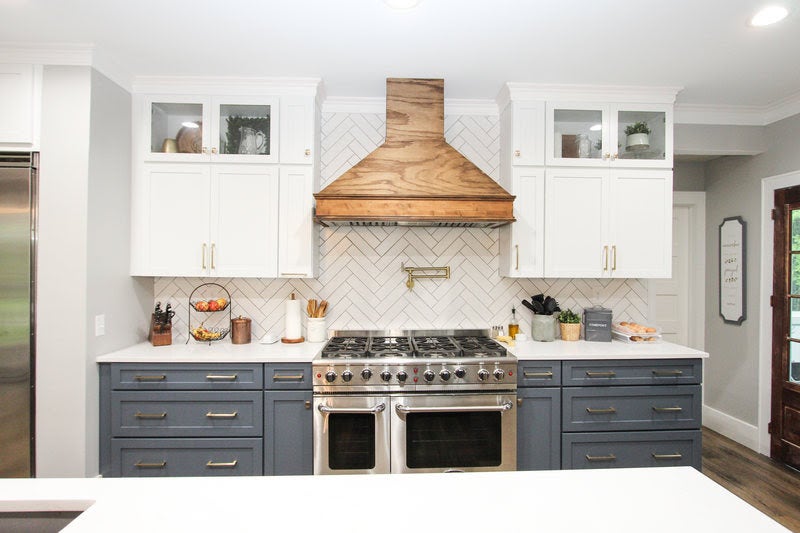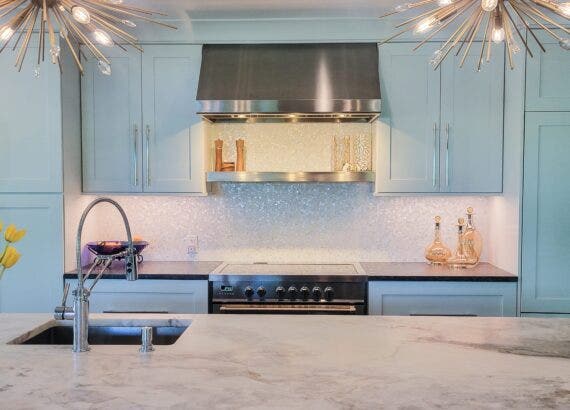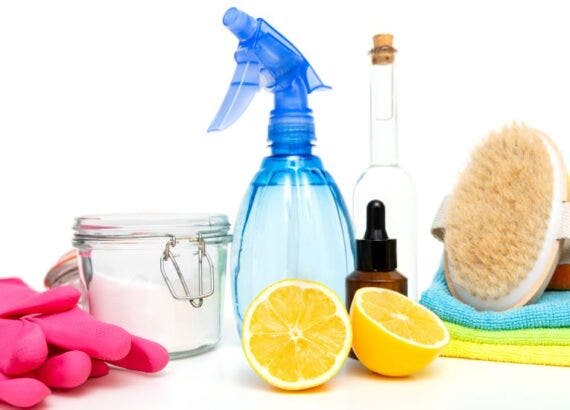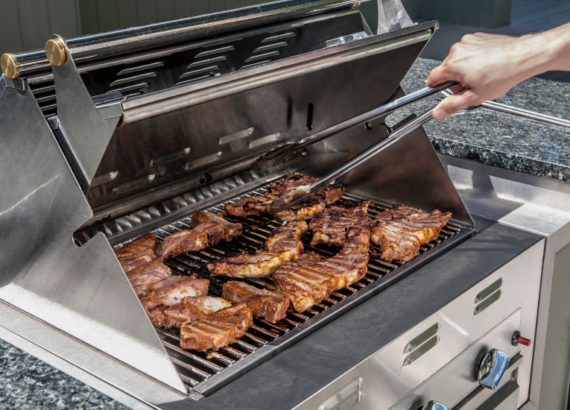How to Improve Indoor Air Quality – 16 Easy Ways

Your home should be a safe place for you and your family. To stay healthy in your home, air quality should be a priority.
But don’t take our word for it! Check out these studies conducted by the EPA. (full report here)
- Some pollutants are two to five times more concentrated indoors compared to outdoors.
- Americans spend about 90% of their time indoors.
- Those who are more susceptible to the effects of indoor air pollution like the young and elderly tend to spend more of their time indoors.
So, it’s vital that you take appropriate measures to improve air quality indoors. Luckily, it’s easy.
We’ll discuss some of the different ways you can immediately improve your indoor air quality.
Note: It’s even more important to take action if you:
- Grill, fry, or cook high-heat foods often
- Cook for 4+ people often
- Will be painting in your home
- Cut or sand wood
- Use strong household cleaning products often
That’s not an exhaustive list. But, just be aware of how much dust or how many pollutants you’re releasing into the air. These activities significantly increase the level of pollutants in your home or workspace.
If you can do any of these types of activities like woodworking outside, that’s ideal.
Before you work down this list, make sure to test your indoor air quality first. Then you’ll have a better idea of how much work needs to be done to clean your air.
Table of Contents
1. Replace your AC filter.
Your AC filter cleans the air that heats or cools your home.
It pulls air from your home (or outside if your AC unit is outside), cleans it, heats or cools it, and then sends it into your home.
The AC filter is key to removing dust, pollutants, allergens, and smoke from your indoor air. Inspect it every three months or so for dirt and grime. Your AC unit is typically in your basement, attic, or closet. Some units are outside, too.
You can often find your AC next to the furnace.
Sometimes you’ll have air filters inside return air vents on your ceiling and wall. Watch the video below to learn how to use them.
2. Inspect your air ducts.
About every three to five years, inspect your HVAC ducts for dust and dirt.
Look for a return air vent on your ceiling or wall. You can open the vent and remove the filter to inspect your air ducts.
Chances are you haven’t inspected your air ducts since you bought your house. So you might want to go check them right now!
You can also take a look at your range hood duct from where it exits your home. This duct shouldn’t ever need cleaning. But if you don’t clean your filters consistently, you might end up having to clean your range hood duct.
Learn how to clean your filters here.
3. Buy indoor plants to freshen the air.
Did you know that some indoor plants can improve your indoor air quality? Cool, right? Plants like English Ivy, Chinese Evergreen, and Mother in Law’s Tongue are great at purifying your indoor air.
If you’re looking for one of these cool plants for your home, click here!
4. Open your windows.
If you’re going to follow any tip on this list, this is the one. It’s so easy! Just crack open a couple of windows or doors for a few hours a day to improve your indoor ventilation. If you live in an area with a lot of bugs, make sure your windows and doors have screens.
Also, check your outdoor air quality before you open windows too. If it’s pretty smoky outside, you’ll want to keep the windows shut.
5. Vacuum, dust, and disinfect surfaces.
The dirt, dust, and germs from surfaces on your home can float into the air and be detrimental to your health. You don’t want to be breathing in all those contaminants at every waking hour. So, set up a schedule to vacuum, dust, and disinfect surfaces in your home.
Start with the high traffic areas of your home, like your kitchen.
Then move to your living room, hallways, and bedrooms.
Even areas of your home that you may not think of can have a lot of dust! Baseboards, door frames, the top of your fridge…the list goes on.
So, think about what you haven’t had a chance to clean in a while. Then, get to it! It’ll only take a few minutes.
Ready to tackle even the toughest kitchen grease? Click here for our top degreaser recommendations.
6. Run your air purifier.
All you have to do is buy the air purifier. Yup, it’s that easy!
The general consensus is to leave it on all day and all night. Dust and dirt will always be circulating in your home. So it’s important to run your air purifier as long as possible.
There are a lot of air purifiers out there, and it can be hard to settle on just one. We wrote a complete article on the best air purifiers for cooking odors that you might find helpful.
7. Seal up your home (if air quality is poor).
Normally, it’s a great idea to open windows and doors to improve ventilation. But, if you live in a smoky area, this can hurt your indoor air quality.
Windows and doors can let air in from the outside if not properly sealed.
Invest in some weather stripping for your doors to keep the outdoor air out.
If you’re getting a huge draft from your windows, you can consider replacing them. But this is pretty expensive.
8. Wash your sheets.
Sheets are one item in your home that may be easy to forget about. At least, they are for me! But your sheets can harbor a lot of dust, dirt, and germs if they’re not cleaned regularly. Clean your sheets about every two weeks to keep the dust at bay. Then the air in your bedroom will be much cleaner as well!
Most sheets are washer and dryer safe but read the manufacturer’s instructions first. You can also air-dry the sheets outside.
It’s important that they are completely dry before you put them back on your bed. Otherwise, mold may grow. You don’t want those pollutants in your room!
9. Use your oven less in the winter.
Your gas oven produces some harmful contaminants, so it’s important to have good ventilation.
In the summer, you can open windows and doors, as long as the outdoor air is pretty clean. But it’s too cold in the winter. So, try and use your oven less.
Whenever you use your gas stove, make sure to turn on your range hood.
10. Invest in a professional range hood.
For any cook, a professional range hood is important to remove smoke, cooking exhaust, and odors from your kitchen. It vents out all the harmful contaminants produced by your gas stove and your cooking, so you can enjoy the clean and fresh air. Learn all about the benefits of airing out your home here.
Cooking odors can linger for days, and many homeowners struggle to keep their kitchen air fresh. Learn more about how to get rid of those pesky odors here.
If you want to start by purchasing your own professional hood, keep reading. We’ll show you a list of some of the best range hoods on the market.
Or, browse some right now at the banner below.
11. Use a humidifier.
It’s important to keep your indoor air nice and humid. Thirty percent humidity is about the minimum amount for homes. This will help prevent bloody noses, dry skin, chapped lips, and other symptoms.
If you live in a dry area, invest in a humidifier to keep your indoor humidity at 30% or higher.
If you live in a humid area, you’ll want a dehumidifier to prevent excess buildup of moisture in your home. Insects, dust mites, mold, and mildew love moisture. So if your home is too humid, you may attract extra dust and critters.
12. Invest in carbon monoxide and radon detectors.
Radon and carbon monoxide are two dangerous gases that need to be monitored in your home. Gas stoves produce most of the carbon monoxide in your home.
Trace amounts of uranium and other radioactive elements break down in soil to form radon. It can then seep into your home.
13. Cleaning with harsh chemicals? Do so outside!
Strong household cleaners like ammonia and bleach can be dangerous when used in heavy quantities. Go outside to clean with these harsh chemicals. You won’t have to worry about any toxic fumes filling your home.
14. Run bathroom exhaust fans as often as possible.
Bathroom fans are, well, great at ventilating your bathroom. I know the fan can be noisy, so you might not want to run it 24/7. But turn it on when you use the bathroom and for a few minutes after to vent the odors and contaminants out.
15. Avoid overusing aerosol sprays, hair sprays, scented candles, and air fresheners.
You can use them, but not too much. Maybe crack a window or two before using your hair spray to improve ventilation.
16. Deep clean carpets and rugs.
Sometimes, just vacuuming won’t do the trick. Your carpets will need a deep clean. The longer they go without a clean, dirt and dust get embedded into the fibers.
To clean your carpets, you’ll want something like this. Carpet cleaners can be a little pricey, but you will use yours for several years, if not decades!
Range Hoods to Improve Indoor Air Quality In Your Home
A range hood will clear your kitchen air of cooking exhaust and other harmful toxins. At Proline Range Hoods, we have a wide selection of professional-quality vent hoods. As promised, here are some of our most popular.
PLJW 185
Looking for a low-profile range hood that won’t take up valuable space in your kitchen? The PLJW 185 is a perfect choice. At only 5 inches tall, this model has incredible power thanks to a dual 600 CFM blower. This much power is hard to come by in under cabinet range hoods! You don’t have to use the max power all the time either.
The four-speed blower can be easily adjusted thanks to the stainless steel push-button controls. They’re easy to access in the front of the hood, and you can also turn on the bright LED lights!
Once you’re done in the kitchen, simply remove the greasy baffle filters and toss them in your dishwasher. Cleaning is that easy.
Depending on your duct setup, this under cabinet range hood can be rotated to the back to vent horizontally.
It’s available in 30” and 36” sizes, making it the perfect fit for the average kitchen or apartment. Purchase your low-profile PLJW 185 right here!
PLFW 520
The PLFW 520 is the perfect range hood for your new kitchen. It features an impressive four-speed 600 CFM blower that keeps heavy smoke and harmful contaminants out of your cooking space. Not only that, but it’s also easy to use.
The backlit push buttons are easily accessible on the front of the hood. So you can cycle through the fan speeds and lights at the push of a button! Our 520 model includes bright LED lights to make sure you can see clearly in the kitchen. They illuminate your entire range and last for years.
Topping it all off, this hood comes with dishwasher-safe baffle filters. Just remove them from your hood, toss them in the dishwasher, and you’re done.
Does this professional wall hood sound right for you? Take a closer look at the PLFW 520 at the button below.
PLFW 755
The PLFW 755 wall mount range hood features a 900 CFM single blower or an 1100 CFM dual blower which will clean your kitchen air with ease. This wall hood has a low-profile rectangular design, allowing it to blend in seamlessly in any kitchen.
Dishwasher-safe baffle filters vent air through ductwork and out of your home. These filters are easily removable for a quick clean. If you’re looking for a minimalist design that packs a punch, this hood is perfect for you.
Take a closer look by clicking on the link below.
PLJI 102
Is your grill on an island in your outdoor kitchen? Then you’ll love our PLJI 102 304 SS range hood! It’s a beautiful centerpiece for your outdoor kitchen. This hood is made of 304 stainless steel, so it’ll be rust-free and durable for years to come.
And since you can toss the filters in your dishwasher, it’s really easy to keep this hood clean. Oh yeah, we didn’t forget about those LED lights either. They’ll help brighten up your little corner of paradise when you’re cooking…just don’t stare at them too long!
The finishing touch to this hood is the 1200 CFM dual blower. It’ll remove pesky cooking smells, contaminants, and smoke that you couldn’t seem to get rid of before. And the best part? It’s got four speeds. Toggle between them using the black LCD touch panel in the front of the hood.
So, what do you think? Want to give our PLJI 102 304 SS a try? Check it out!
PLJW 129
The PLJW 129 is a thin and sleek range hood. It is a beautiful addition to any kitchen. Our 30” and 36” models come in 900 CFM, while the larger 42” and 48” models are available at 1200 CFM. This wall hood is complete with bright LED lights so you can see clearly in the kitchen. Also, the efficient stainless steel baffle filters capture heavy grease and smoke with ease.
Not to mention that you can adjust the blower speed to four different levels depending on what you’re cooking.
Check out our PLJW 129 wall hood right here!
That’s all for our article on how to improve your indoor air quality. We hope you will give a range hood a try to eliminate pesky smoke and cooking odors once and for all.
Thanks for reading!
As an Amazon Associate, we earn from qualifying purchases.








Comments are closed.